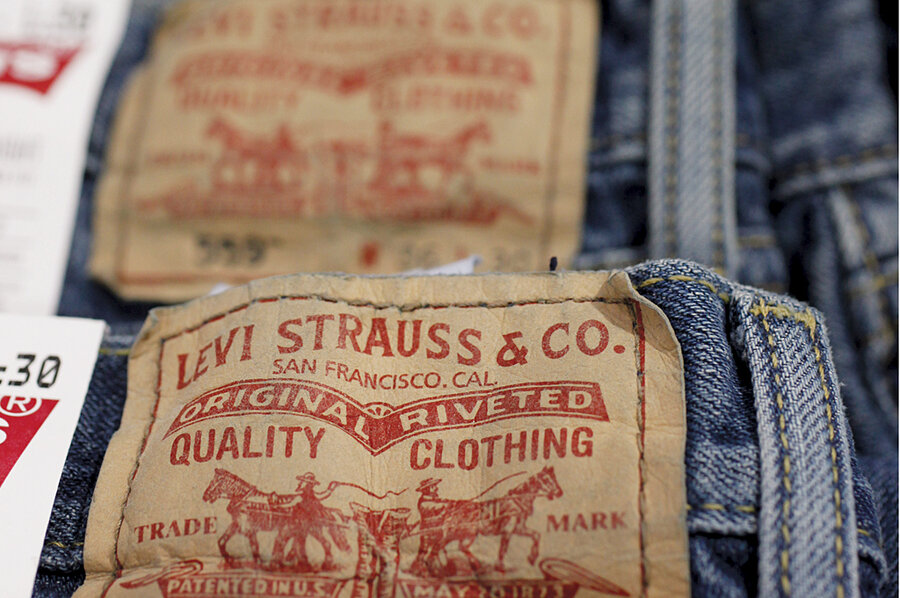Follow your labels: There is no such thing as a blue jeans machine
Loading...
| Phnom Penh, Cambodia
The door opened, and I disappeared into an endless room of workers and sewing machines, a veritable Bluejeans Land, at a factory producing Levi's and Old Navy brand pants.
Wires and tubs hung from the ceiling. Trolleys were pushed. Needles chattered. A thousand workers wore hairnets colored according to their duty.
The assistant factory manager led me past a pile of cut denim. On each side of us, young women folded and pinched fabric, lining it up before squeezing off a few bursts on the sewing machine.
Their hands were fast and efficient. As we walked down the line, pairs of adult jeans slowly started to take shape.
At the end of the line, we stood next to a pile of Levi's, and I asked my guide: "How many people have a hand in sewing a single pair of jeans?"
"Eighty-five," she said, "and that doesn't count the others."
"The others?"
"Please, I'll show you."
Motorized grinding stones lined the walls of a smaller room. I watched as a young woman started grinding the cuffs and pockets of a perfectly good pair of jeans. Another woman ground a hole in a knee, stopping to hold it up, and I imagined her asking herself, "Will the Americans think this is a cool hole?"
She was not a machine: The realization sank in that there is no such thing as a bluejeans machine.
Near another bluejeans factory in Cambodia I met eight young female garment workers who shared lodging in an 8-by-12-foot room with one water spigot that acted as kitchen sink, shower, and laundry. The only piece of furniture was a bed that held four – the other girls slept on the floor at night.
Over the course of a few weeks in the spring of 2007, I got to know several of the women, including Ai, age 24, whom I accompanied back to her village to meet her family. Ai couldn't afford to make the journey often, but she sent half of her $55 monthly wage home to her family. The average garment worker in Cambodia supports five to seven family members back in the village.
"I have always lived in the village," Ai's mother told me. "I will never live anywhere else. But there are no jobs here, so I have to send my daughters to Phnom Penh to work."
Ai told me what she missed most about the village: "[W]orking and talking in the rice fields. At the factory we aren't allowed to talk. The Chinese bosses want us to work as quickly as possible."
That's right, she said, Chinese bosses. Many of the factories in Phnom Penh are owned by Chinese and Taiwanese companies, overseeing the Cambodian labor force that makes jeans for European and American brands. (Levi's aren't even sold in Cambodia.)
When the global financial crisis hit, many workers, including Ai, lost their jobs. By December 2009, 70 factories had closed in Cambodia and 70,000 workers were unemployed.
"The global economic crisis has a human face. In Cambodia it's not just people's livelihoods at risk; it's people's lives," Douglas Broderick, Cambodia's United Nations resident coordinator at the time, said in a press release addressing declining jobs and the rising cost of food in Cambodia.
Ai moved back to her village to help on the farm, but by the end of 2010 she'd heard about an opportunity in Phnom Penh at a hotel, cleaning rooms for $70 a month. She returned to take the job.
"I think it is enough," Ai says, "compared to my job at the factory."







